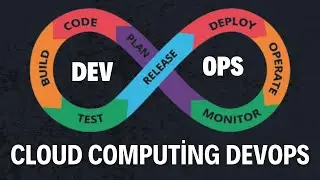How to Transitioning from QA to Product Owner'' A Step-by-Step Succeed Guide
Transitioning from a Quality Assurance (QA) role to a Product Owner (PO) role is an exciting step. It leverages your QA experience while introducing new responsibilities, primarily focused on product vision, prioritization, and stakeholder management. Here’s a guide on how to navigate this transition:
1. Leverage Your QA Experience
Deep Product Knowledge: As a QA professional, you have a solid understanding of the product, its strengths, weaknesses, and potential improvements. This is a key advantage as a Product Owner.
Focus on User Needs: QA often focuses on user requirements and ensuring product quality from the user’s perspective. Carry this focus into your new role to ensure the product meets customer needs.
Collaboration with Development Teams: You've already worked closely with development teams, understanding technical constraints and communicating effectively. This experience is crucial for a Product Owner.
2. Develop a Product Management Mindset
Understand Business Objectives: Product Owners focus on delivering value aligned with the company’s strategic goals. Develop an understanding of business metrics like ROI, market demand, and customer satisfaction.
Learn Prioritization Skills: As a PO, you’ll need to decide what features or fixes are most important. Learn frameworks like the MoSCoW method (Must have, Should have, Could have, Won’t have) or RICE (Reach, Impact, Confidence, Effort) for prioritizing work.
Think Long-term: QA often involves thinking about immediate releases. As a PO, you need to look ahead, managing the product roadmap and anticipating future needs.
3. Master Agile Methodology
Scrum Framework: Most Product Owners operate in Agile environments, especially in the Scrum framework. Study the roles, responsibilities, and ceremonies of Scrum if you aren’t already familiar.
Backlog Management: Get comfortable with managing a product backlog, writing user stories, and breaking down large epics into smaller, actionable tasks. You’ll need to ensure the team has a clear, prioritized backlog at all times.
4. Hone Communication and Leadership Skills
Stakeholder Management: The PO is the primary point of contact between the development team and stakeholders. You’ll need to communicate product vision, manage expectations, and balance stakeholder demands.
Negotiation and Conflict Resolution: Often, you’ll have to negotiate between different stakeholders’ competing priorities. Develop skills in negotiation and conflict resolution to maintain harmony and keep the project on track.
Team Leadership: While you won’t directly manage the development team, you’ll lead the team by defining priorities and ensuring everyone is aligned with the product vision.
5. Upskill in Relevant Areas
Product Management Tools: Familiarize yourself with tools like Jira, Trello, or Asana for managing backlogs, sprints, and releases.
Analytics and Metrics: Understanding how to track and interpret product metrics is key to making informed decisions. Learn about tools like Google Analytics, Mixpanel, or Pendo.
Certification: Consider obtaining a Certified Scrum Product Owner (CSPO) or Professional Scrum Product Owner (PSPO) certification to formalize your skills and knowledge.
6. Seek Mentorship and Networking Opportunities
Find a Mentor: If possible, connect with a Product Owner or Product Manager in your organization or industry who can offer guidance.
Join Product Communities: Networking with other POs in communities like Product School or Mind the Product can provide valuable insights and resources.
7. Showcase Your QA Background as a Strength
Highlight how your attention to detail, experience in testing, and ability to detect issues early in the development process will make you a proactive Product Owner who can ensure high-quality outputs.
Actionable Steps:
Start shadowing a Product Owner at your current job to understand the day-to-day responsibilities.
Begin taking on small backlog management or story-writing tasks to get hands-on experience.
Take a course on product management or Agile frameworks to build formal knowledge.
By aligning your QA expertise with product management principles, you can successfully transition into a Product Owner role with a strong foundation in product quality, user needs, and team collaboration.
We'll cover:
1/ Understanding the product lifecycle from a PO perspective
2/ Creating and managing the product backlog
3/ Adjusting your mindset to think like a PO
4/ Importance of getting a PO certification like CSPO
As a QA, you already have a deep understanding of how to test and ensure product quality.
Transitioning to a PO role means guiding the team to build prioritized features and understanding what user stories need to be added to the backlog.
Join the free Skool Community at:
skool.com/agile-leaders































